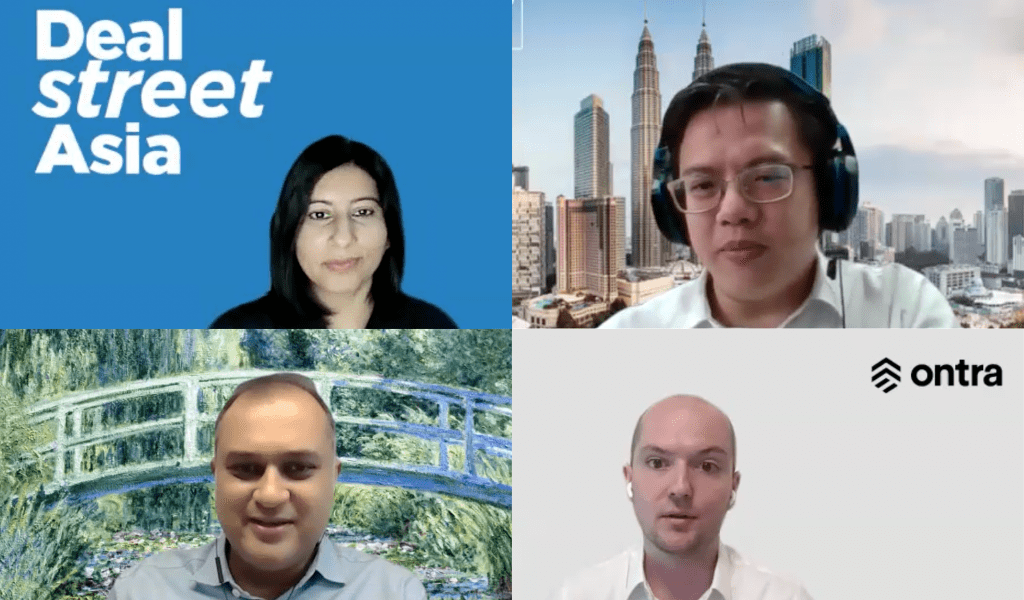Partner content in association with
How private capital fund managers are using technology to drive growth
(Clockwise) Deepshika Monga, Senior Editor, DealStreetAsia; Edwin Fua, Partner at Navis Capital; Jon Crandall, Managing Director Asia Pacific at Ontra; Anupum Khaitan, Executive Director at Capital Square Partners
The confluence of digital technologies has the power to revolutionise the PE space and provide a competitive edge to early adopters. In April 2022, DealStreetAsia in association with Ontra released a report titled “Making the best of the new age of dealmaking”. The findings of this survey conducted with private capital fund managers on their use of technology in response to the COVID-19 pandemic shines light on the rising importance of technology in the private capital industry and provides insights into how it can be leveraged to drive efficiencies and growth.
The report served to initiate a webinar with participation from high-profile speakers representing the worlds of private equity and technology. The esteemed speakers — Edwin Fua, Partner at Navis Capital; Anupum Khaitan, Executive Director at Capital Square Partners; and Jon Crandall, Managing Director Asia Pacific at Ontra —sat down with DealStreetAsia’s senior editor Deepshika Monga to discuss the opportunities of applying technology in the private equity space.
Why do you think private equity players have not embraced technology in a big way?
Fua: At a fund management level, I would say we are experimenting with technology. COVID probably forced us to do so. Enabling technologies are usually not adopted in a big way because it’s not mission critical. Of course, there are efficiencies to be gained in the context of deals, exits, and other tasks. I think as a firm, and as an industry, we could do a lot more with technology.
Khaitan: I think there are two different types of investors. First, those who take an opportunistic perspective, which is very much relationship-oriented. They believe everything is based on a personal rapport. They want to get into the weeds and do something very quickly and move mindfully. Second, there’s a new upcoming breed of GPs and fund managers who are using technology in innovative and advanced ways for deal screening and perhaps be opportunistic in their own right. So, I think there’s probably a bifurcation happening in the industry right now. There are many ways to look at technology as enabling the investment process, both from a back-end and front-end perspective.
To what extent has COVID changed technology adoption? Where are you using technology more?
Khaitan: Generally speaking, most GPs are always looking for the right types of deals, which has to do with opportunism. Capital Square Partners is a leveraged buyout shop. So, a lot of pieces have to come together for us to do a deal. That said, we are using technology particularly when it comes to enabling interactions amongst people, sharing information and communicating with one another. Sometimes it’s as simple as doing a conference call on video chat rather than on a phone call. The other way is to get a chance to actually survey the landscape, meet a lot more people, and be more efficient with one’s time. Particularly when we live in a fantastic place like Singapore, which is an island. Often we do need to travel abroad to find target companies and meet potential investors. Certain technologies enable us to streamline that investment process.
On the back-end, I think everybody’s using technology. Particularly from a governance standpoint, it’s becoming almost a modus operandi for anybody running their business, whether it has to do with accounting software, or legal documents and other aspects of the business. So, I think there is a way for technology to help out both on the front-end and the back-end.
Fua: Since COVID, we’ve seen a change in mindset. Earlier, if we wanted to originate deals or build relationships, it would be considered rude if you don’t visit in person and shake hands with the interested party. Nowadays, it is acceptable to suggest doing the first meeting on Zoom. This change in mindset allows for a lot more to happen efficiently. With so many tools now available, even the way internal teams work has changed. The other aspects that have come up are digital disruption and cybersecurity. During COVID, we felt a lot of our companies were not yet prepared to adopt technology. Today, they’re much more prepared even when we’re looking at new investments and talking about new issues; technological preparedness adds great value. It is essential to help clients navigate the digital roadmap going forward. Cybersecurity is crucial and I think we’re ready to cope and help them through that journey.
Crandall: As a legal and compliance technology company, at Ontra we specialize in the asset management industry working with over 600 firms around the world. So, when we speak with clients, the real key to remember is that technology adoption is not a monolith. It reflects the current pain points that people are feeling.
During COVID, there was an obvious and immediate shift from the traditional way people ran processes and deals to having to do everything remotely. Video conferencing technologies like Zoom and anything that can allow remote execution of deals obviously became hot overnight. In the first year of COVID, virtual due diligence, remote deal execution, remote deal sourcing, had to be learnt. In 2021, there was a much swifter recovery in the economy, particularly in the private equity and the investment markets, than anyone had foreseen. Most firms that we spoke with weren’t equipped to handle the rising volume of deal activity. Business took a turn towards anything that allowed people to expand their teams and execute more with existing resources.
But as we’re coming out of the pandemic era, and with the economy being more finicky right now, people are a lot more pickier. How technology can help cut costs and make sure funds can deliver, not just in terms of finding good investments, but actually making their own internal operations as efficient as possible, is in focus.
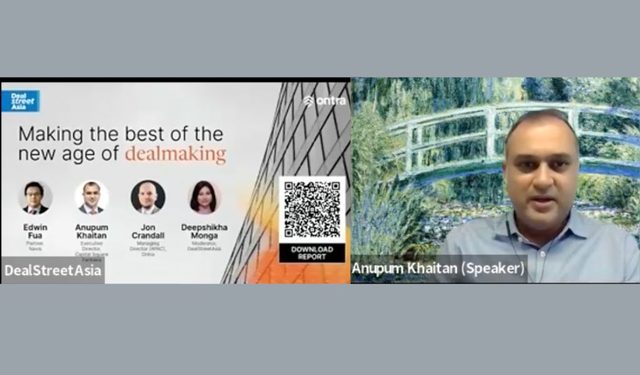
As fund managers diversify their LP base and expand into private wealth management, what role can technology play? How will this affect traditional processes?
Khaitan: With respect to private wealth management and family offices, traditional fund managers usually onboard family offices as verifiable LPs or enable them to co-invest in deals of some value-add beyond pure financial returns. Increasingly, as the world shifts, family offices and high-net-worth individuals are seeking to do direct deals and there’s clearly an opportunity for them to start co-investing as well. By enabling that, it makes the collective capital accessible to our industry a lot larger than it has been historically. A lot more opportunities open up both in terms of capital sourcing and reacting quickly to deals.
Fua: I would also say that as things go retail, there needs to be an adjustment to the information flow and how the LP engagement happens. Obviously, you won’t get the same LP engagement if you’re functioning with a diverse set of smaller investors. So, how do you streamline that and put protections in place for both LPs and us when everybody wants a high amount of engagement? If you don’t have a higher amount of engagement, how do you ensure the right protections? It’s very interesting now with retail investors wanting to participate. Increasingly, more localised investors are trying to play into that. We need to find a model that can help cross that bridge where you get people into private markets, but yet give them a certain amount of diligence governance framework. The hope is that private equity and institutional capital will find a way to do that.
Crandall: What we are seeing on our side – from a general expansion of our clients and their businesses and not necessarily within the private wealth segment specifically – as they internationalise their businesses and tap more diverse LP bases, we are seeing more types of investors based out of various locations in the world. This creates a much bigger regulatory hurdle for asset managers.
Investors are becoming more sophisticated and asking for more than they used to. Ten years ago, only a few investors and particularly notable investors, largely sovereign wealth funds, would ask for special terms and side letters. These days, you can easily raise a fund where the majority are asking for side letters. They’re also asking for a more in-depth and more complicated version. The same paperwork that might have been five pages 10 years ago is now 60-80 pages. When you put it all together it’s just a massive headache of paperwork.
So, from our perspective, we try to work with clients by putting in place processes and tech systems to enable them to scale up teams and make them more efficient. If you examine the industry, over the last five or six years, AUM in the private asset management space has grown annually by around 20% and reached just over $11 trillion at the end of last year. But the paperwork and the number of deals has grown significantly faster than that. So, you just have to be more operationally efficient and effective than you ever have been in order to even deliver the same level of returns as in the past.
Fund managers are sitting on record dry powder. While they may slow down their pace because of the current environment, they’re not going to sit idle. What is deal sourcing looking like in this environment?
Fua: As was covered in the survey, deal sourcing remains top of mind. It’s no secret that there is a record amount of dry powder. But people are also cautious. The two potential levers that can help you get ahead are data and insight. That’s something that technology can help with. While technology might help maintain an already established relationship, it cannot be the stepping stone to building intimate relationships. However, if you’re able to leverage technology to get unstructured data and filter it out faster to get insights on listed companies or a list of companies, then finding deals or the hidden gems becomes faster and more efficient. This has worked well for us especially in the healthcare and education sectors. That is the opportunity that tech brings to deal-making.
Khaitan: While a lot of funds are sitting on dry powder they’re somewhat hesitant to deploy, because they don’t know if they’ll have to support their pre-existing companies. They’re hesitant to deploy in anticipation of a turnaround in the macro situation. Ultimately it’s about developing mindshare. There are some leading lights of the industry that have developed mindshare on a particular topic that can help the average typical investor. As a consequence of that, they can really attract capital, particularly dedicated capital looking at that strategy.
The other area to understand right now is that DeFi has become even more entrenched in the sovereign, quasi sovereign and ultimately, institutional-level government-backed institutions that finance GPs and funds. As a consequence of that, creating processes and a mechanism that enables them to quickly onboard and do their due diligence on the manager is imperative.
Crandall: I think speed to market and better investor relations are critical in this environment. I tend to break the lifecycle of an asset management firm up into three parts – fundraising, operations and capital deployment.
On the fundraising side, anything you can do to reach more potential LPs, to give them a better onboarding experience, and get them to deploy money faster is the key. So, we do things like digitising the subscription books and creating LP profiles, so that if they’re reopening into the next fund, you don’t have to send them 150 pages of documents. You can pre-populate everything and send it straight to them ready to sign or closely ready to sign.
Investors are really focused right now on being more transparent with LPs and answering their questions better and faster. Any sort of technology to keep track of what you’ve signed up with investors, to manage and to track your obligations and your reporting deadlines, both on regulatory reporting and contractual reporting, and making sure those go out in a timely fashion without the investors having to chase you, is crucial. These little things individually won’t get an investor to invest. But they do ensure that there’s a good experience and recall of the GP for the next round.
On capital deployment, speed is almost everything. We work with investment houses to build and implement AI and data analytics platforms into the contractual negotiation process, to make sure that paperwork can get signed as fast as possible.
In the current environment, are fund managers going to spend more time on portfolio monitoring than in 2021 or earlier? What’s different about the process, if any?
Khaitan: I think it ultimately depends on your operating mandate. We represent our investors as fiduciaries. So when I look at a leveraged buyout shop, my understanding is that it is probably strong in portfolio management as well. That’s how we’ve always been monitoring our investments. Because if one thing goes wrong it can be quite a disaster in terms of using leverage to gear the company. And then, de-leveraging is part of the value creation process. If anything goes wrong there, it’s a big hiccup for all of us. In fact, we try to do enough of our research and analysis ahead of time so that we understand the operations and the quality of earnings so well that by the time the deal is initiated, done and closed, everything is pretty much pre-ordained.
Fua: At Navis, by the time we invest we really get behind the nuts and bolts of the business and the industry. Of course, things change as we go along. But we’ve developed quite a comprehensive reporting framework that we get across month-on-month. We’re talking to our portfolio companies, we’re working with them through different initiatives and that might come from our operations and investment teams from a strategic standpoint. Whether it’s a strategic five-year plan, or a 100-day plan, or a month, when it comes to the yearly budget or monthly initiatives, we’re almost side-by-side with them.
The only parts that have probably changed are more emphasis on ESG now compared to three or four years ago. Even with our portfolio companies, there’s a lot more that we’re asking for from them, whether that’s from a labor standpoint, or emissions, or diversity. We’re being more standardised in how we’re asking for it. There’s also a recognition in the form of these companies being valued at higher multiples.
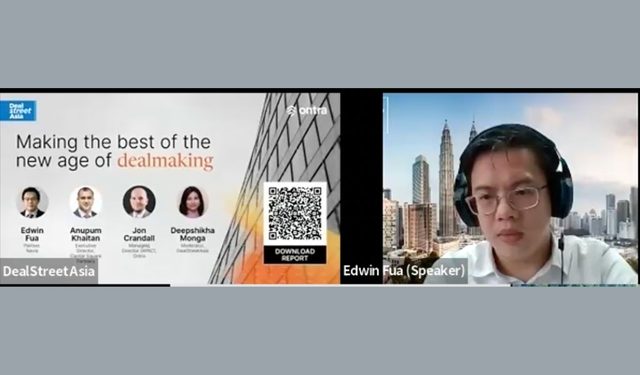
Is the increased focus on ESG being driven by your LPs? We’ve previously talked about the lack of reporting framework or the lack of focus, particularly within this region on some of the governance related issues? How do you solve that?
Fua: It’s not new for us, but I think it’s more unstructured. In the past, we did some work with CDC (now known as British International Investment), which helped us form a governance framework to take a look at the different aspects of ESG. We took that as a base and started to develop that and in the last couple of years we’re actually seeing the worthiness of it. We’re seeing it gain more widespread support, not just from investors, but it’s coming from the central bank as well. There’s recognition even from the companies themselves. There’s a lot more talk with regard to things like climate change. It’s the same as what I mentioned about technology. Prior to COVID, many companies were not aware of ESG related compliances. Today, everybody talks about it and that’s really helpful.
From a governance standpoint, when we look at deals, we apply the institutional lens. In Southeast Asia we’re still falling behind the mark. Family businesses are focused on growing the business and growing profits and aren’t necessarily focused on the background. We actually see that as an opportunity for the last 25 years that we’ve been investing in Southeast Asia. We do our own due diligence, so we know what we’re getting into. But at the same time we are coming in to clean up the company, put in the processes, the institutionalisation.
Most seasoned GPs have admitted to looking at longer fundraising timelines for the vehicles that are currently in the market? What are some of the ways in which managers could really tackle this challenge?
Khaitan: When it comes to the fundraising cycles, having processes ready to go, which are institutionalised, creates value-add and competitive capability with respect to whoever’s out there in the marketplace. Right now timelines are extended. So, whatever all of us can collectively do to assist with that, ultimately, I think drives value. The second area goes back to developing mindshare in a particular topic or mandate. At Capital Square Partners, we are a dedicated technology buyout shop, the largest that we are aware of in all of Asia. We focus on technology leveraged buyouts. So, we have always attempted to develop and create mindshare in this area. It allows early stage investors to have some confidence that when they exit their companies, these companies have other investors who are looking at them and looking at how they can derive value from more mature companies or growth stage companies.
Crandall: Fundamentally, what we’re seeing right now is just a hesitancy on everybody’s part to deploy funds and to commit funds for anything that’s less than kind of a home run or a sure bet. And that goes for LPs when they’re deploying into GPs. Maybe I’m not being creative enough, but I don’t think there’s really any technology that is going to fundamentally solve that hesitancy. But what that does mean from the GP perspective is that you really have to ensure that you’re investable by as wide of a portion of the market as you really can be. So, there’s an increasing focus these days at the LP level when they’re deploying capital on conducting due diligence on GPs to dig into a lot of areas that were less in focus in the past. These include internal compliance and control systems that GPs implement, on the financial side, legal and compliance, or on the ESG reporting side.
A lot of the large LPs also work with external consulting firms to do due diligence on underlying managers, which will ultimately give the LP a score. Anything you can do to up that score would be useful. So things like streamlining and digitising your investor onboarding process is of value.
What are some of the regulatory compliance related challenges that we’re seeing coming to the fore?
Fua: The number of boxes we have to tick nowadays is a lot more. From an investment and portfolio side, there are three challenges. One, taxation is getting more complicated. The world is getting more connected, even within the tax authorities. The rules are getting more complicated. It equally applies to our LPs, because they all have different tax jurisdiction requirements. Two, accounting and reporting standards have become much more complicated. The third is ESG-related compliance. There’s a whole host of work that now comes in with regards to compliance and the things that we look for in terms of diligence.
Crandall: Tax is always a big pain point. But what we’re also seeing, given the very swift growth in AUM over the last 15 years, they’ve been growing significantly faster than public markets. What that really means is that they’ve been squarely in the regulator’s eyes because of the amount of money that flows to the private market these days. So investors are increasingly very specifically focused on private market regulation and private market compliance.
Even though we’re sitting here in Southeast Asia, a lot of fund managers who invest in the region are still U.S. SEC-registered investment advisors. So they do have to worry about regimes like that. The U.S. SEC is very specifically focusing on side letter compliance for private fund managers this year. And how do investment managers make sure that they comply with everything that is put into a side letter. This is a big focus of SEC rulemaking right now. But beyond just the substance of it, they’re also looking at the systems that fund managers put in place to ensure compliance with this. Given the amount of money in the private markets, I don’t really see that trend turning around right now. And I think it’s more likely to go the other way with a lot of the major regulators in the financial centres in Europe and Asia kind of jumping on a lot of the same trends that the U.S. is leading.
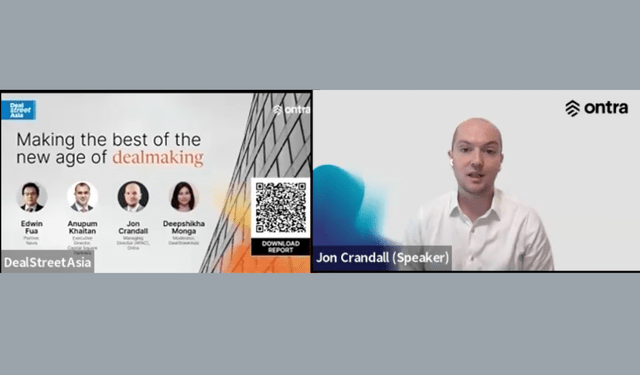
PE funds are judged on the vintage year, and despite record dry powder PE funds could face the prospect of a prolonged period of higher borrowing costs, lower valuations, and depressed returns. For the industry in general, especially in Southeast Asia, how do you see the 2020-23 vintage?
Fua: The mantra that we go by is think about it across cycles. That’s no different in 2022 or 2023. Is it a particularly difficult environment to go into? I don’t think all of it is negative. I think Southeast Asia, for example, has a lot going for it from a macro standpoint. If you talk about demographics, that’s really positive. We talk about GDP growth, we talk about economic resiliency, that’s really positive. Increasingly, you see more integration, whether that’s in terms of regulations or technology (for example acceptance of QR and digital money across the systems) or you talk about cultures. I think that could also continue to integrate quite well. Southeast Asia also doesn’t suffer from demographic headwinds. From a macroeconomic standpoint, I think we still remain very positive about Southeast Asia.
Are certain things tougher now, you know, when you talk about inflation and macroeconomic softness? Yes, there are things to watch out for. But I’d say, if you think about Southeast Asia as a whole, is it a bad investing environment? Not necessarily. You have to shift your focus in terms of thinking about which will be the winners and losers, and how you can play into that. I don’t see that the market is starved of capital. I’d say it’s an extremely tough environment. In certain economies in Southeast Asia, the local domestic population is very optimistic about the changes that technology can bring about, moving up in terms of the GDP per capita and their consumption. So we still see a lot of opportunities. So for me, 2020- 2023 is not going to be too different to what we would average in terms of mid-cycle of returns.
Khaitan: When we look at buyout deals we have to do all of our homework before we get involved because there’s many different areas that need to line up. Ultimately, we get paid for two things. One is to source great deals, the second is to manage those deals and make sure that they come to fruition in the way that we expect that they do. So what I’d say is that, in general, the industry is always looking for how to best manage that situation. This is not something that is new to us. We’re constantly dealing with companies that are going through various changes in terms of transformation, cost basis, both on internal as well as external, macro environment basis, and therefore we have to always be cognizant about that.
Do you think the biggest role that tech can play is to change PE from being a relationship based business to a pure returns-based game?
Fua: From a value creation perspective, I think tech is an enabler, but it’s not going to make it just a numbers game. So much of a good business and our performance in the business is to do with people, especially in this part of the world. And I’m not talking about relationships. I’m just talking about the difference between great talent and average talent. I’m talking about the differential between a great organisation, great culture, and a great leadership compared to an average organisation.
Crandall: With the acceleration of AI adoption across all sorts of industries these days there is certainly a huge focus. But at Ontra, what we’re really looking at is that technology empowers humans, not technology that replaces humans, for the most part. Ultimately, the fund business, the investment management business is judgement based. You’re looking for how you can get the best risk adjusted returns. It’s not purely data based. Data can play a big part in that it can allow people to make a decision faster or in a smarter way. And that’s what we really try to use technology to do, to empower the humans that are already there in a process to help them make better decisions, help them make faster decisions.
And then when you’re looking at AI in specific, I think, there’s been some very large leaps and bounds made over the last couple of months, in terms of things like ChatGPT and Open AI. But really, if you look at the asset management industry, and I would extend that to the legal industry as well, while these are really useful, they do have some big problems that prevent them from just replacing the people element wholesale. In particular, the nature of these AI platforms to create and give false answers. You’ll get a different answer each time. That’s probably great for creative endeavours. It’s really, really bad for more technical fields. So overall, I would say no, I don’t think we’re close to replacing the human element. I don’t think we should replace the human element right now. But tech can absolutely be used in a smart way to empower the human element.
